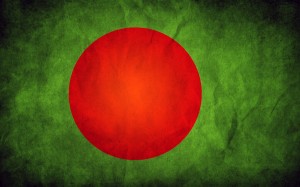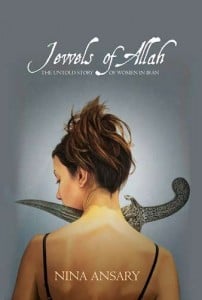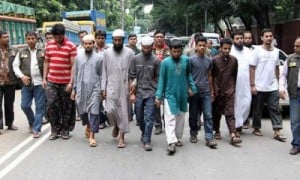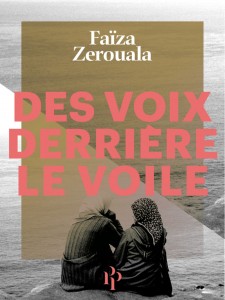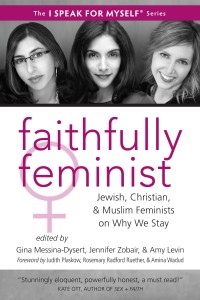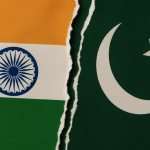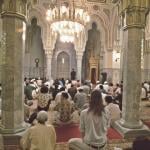I am not going to lie, I started reading Without Shame with some skepticism – and I have to confess that skepticism stemmed at least in part from the author’s background and previous writing. Katherine Russell is a non-Muslim, white Western writer with a background in poetry and love stories. In 2006 she published a book on stories of people living with cystic fibrosis (endorsed by Celine Dion), but it was only recently that she started writing about “the other.” You can find her reflections on her trip to Turkey, her analysis of food-sharing American vs. Ethiopian style and an interview on her story “Crustacean,” set in Nepal, on her site. Without Shame is her latest attempt to make sense of “the other.”
Of course, just as you shouldn’t judge a book by its cover, you definitely shouldn’t judge it by the author’s background.
Some reviewers have seen the book as a sweet story with a pleasantly surprising ending. Others see some complexity in the themes addressed and a way to understand Islam (whatever that means). For some, this was a book about identity. The author herself, Katherine Russell, sees her book as a way to encourage religious tolerance. Given the varied responses to the book, I think it is important to recognize our own biases and backgrounds as reviewers, so readers can pin point our blind spots. For those who know my writing, you will know that I have a Latin American background, and that I identify as Indigenous and Muslim. I am from “the Third World” a term that, following the thoughts of decolonial authors, means a space and time that have been invented by the West. These days I find myself working extensively with decolonial approaches and critical race theories. I have been writing for years about depictions of Muslim women in media, art and literature, and I would like to think that my analyses have become more complex with the years. It is with this background that I come to Without Shame – like I said, I was unfairly skeptical from the start, but unfortunately the book itself gave me plenty of reason to support my initial reaction.
The novel’s protagonist is Sariyah, a girl who is said to have no shame because she is “disobedient” and does not behave according to her village’s notion of femininity. Sariyah’s life is changed at a young age when, as a child, she jumps from the roof of her house to the river, only to fracture her pelvis. After visits from traditional healers she recovers and is able to walk again, but not without a limp. The rest of her story is marked by her disability and people’s perception of her shamelessness.
The story is set in the late 1960s and 70s, during Bangladesh’s struggle for independence from Pakistan. This colonial history is often mentioned but with little analysis, and although some characters like Penelope, a white Western feminist, allude to some Western imperialist practices, these are never truly explored in depth.
Sariyah eventually starts working as a maid at Martin House, an American compound that brings American volunteers to teach the village people about agriculture, home economics, history, English and hygiene. There, she meets Rodney, a clueless, entitled, privileged (my opinion) teacher, who goes to teach in an attempt to avoid being drafted into the army. Needless to say, they develop a romantic relationship (non-sexual) that does not get fulfilled, because Rodney goes back home.
Even though I think I was supposed to see a story about a strong female character, I saw the story as that of clashing patriarchies. Sariyah’s dad is the stereotype of “brown patriarchy.” He is poor, ignorant, aggressive, and violent. He abides by traditional understandings of Sunni Islam within the context of his village. Rodney on the other hand is the Protestant, secular, Westerner (his race is never mentioned, but he is depicted in the way the white-male-saviour is shown in other books), who comes to save and civilize the village. He thinks that things need to change in Eastern Pakistan and he thinks he knows how change should occur. He wants to bring “development” about.
At some points, the story felt like the eastern version of Pocahontas, you know… the beautiful native informant who is not fully appreciated by her own people, and who falls in love with the white Western saviour that fully sees her for what she is. Sariyah is “discoverable land” and religion is the outlet through which the discovery happens. Rodney questions her choice to wear hijab, her belief in God, her belief in spirits and the alike, only to agree with her views without being fully convinced. Sariyah remains enigmatic yet “conquerable” in some ways. Towards the middle of the book , Rodney describes his feelings for Sariyah like this: “If he were speaking the whole truth, he would have admitted how he found Sariyah attractive and mysterious, dangerously different. He wanted to unfold her, read the secrets of her life history, see what he was missing” (p. 104).
Rodney learns a thing or two, but overall his saviour complex does not drastically change. Besides, even though some learning happens through Sariyah, he has most of his epiphanies with Sajib, Sariyah’s maternal uncle. Sajib is the third archetype of patriarchy. He is the revolutionary; he is well-educated, but religious; traditional in some ways, but respectful of women. Furthermore, he has a vision for Bangladesh and an undying loyalty to his Bengali heritage. In my opinion, Sajib is the most interesting character perhaps because he is the most nuanced.
Sariyah’s role is not really that of a main character, in my view, but that of a “negotiator.” She is the commentary on how Sunni Islam can be blindly violent and patriarchal (as represented by her father), but other “sects” such as the Sufis (as represented by her maternal line) seem to be less so. She is also the archetype of the nation… a familiar trope in novels about the “Third World.” She has the chance to experience the West through Rodney, but at the end, she fulfills the destiny for which Sajib has prepared her, as a revolutionary… a woman without shame.
Despite the fact that the book is extremely easy to read, I sometimes found myself screaming at the pages. In between the frustration about the depictions of “the other” and the whole idea of writing this book as a way to promote tolerance, I had to put it down several times.
This book is written for the privileged. It is written for an audience that does not know the Third World, that has not known war other than from the perspective of the invader/colonizer, that does not know Muslims, that does not know poverty, that isn’t acquainted with anything but second-wave feminism and that is in search for a “short cut” to make sense of the South Asian “other” or the Muslim “other.”
Reading books like this just remind me that white Western privilege is well and alive and that the rest of us continue to be subjects of “discovery,” “development” and of “saving.” Can we get over that now?

